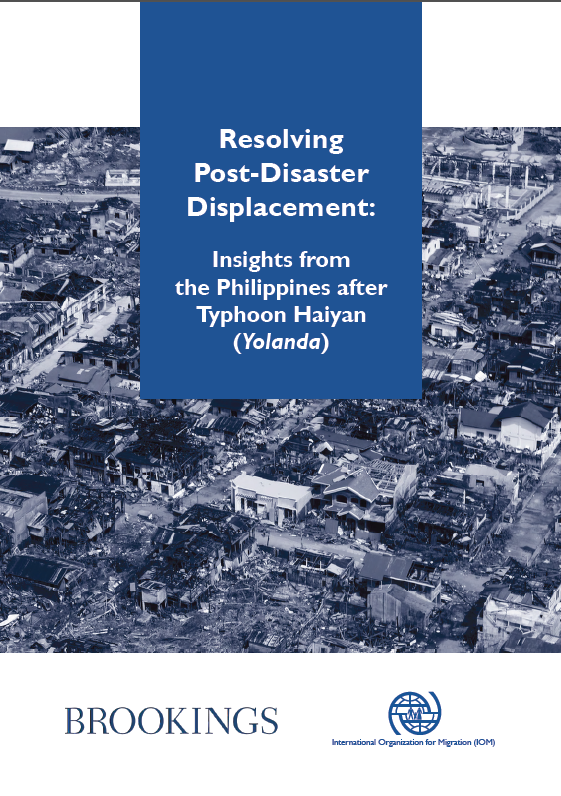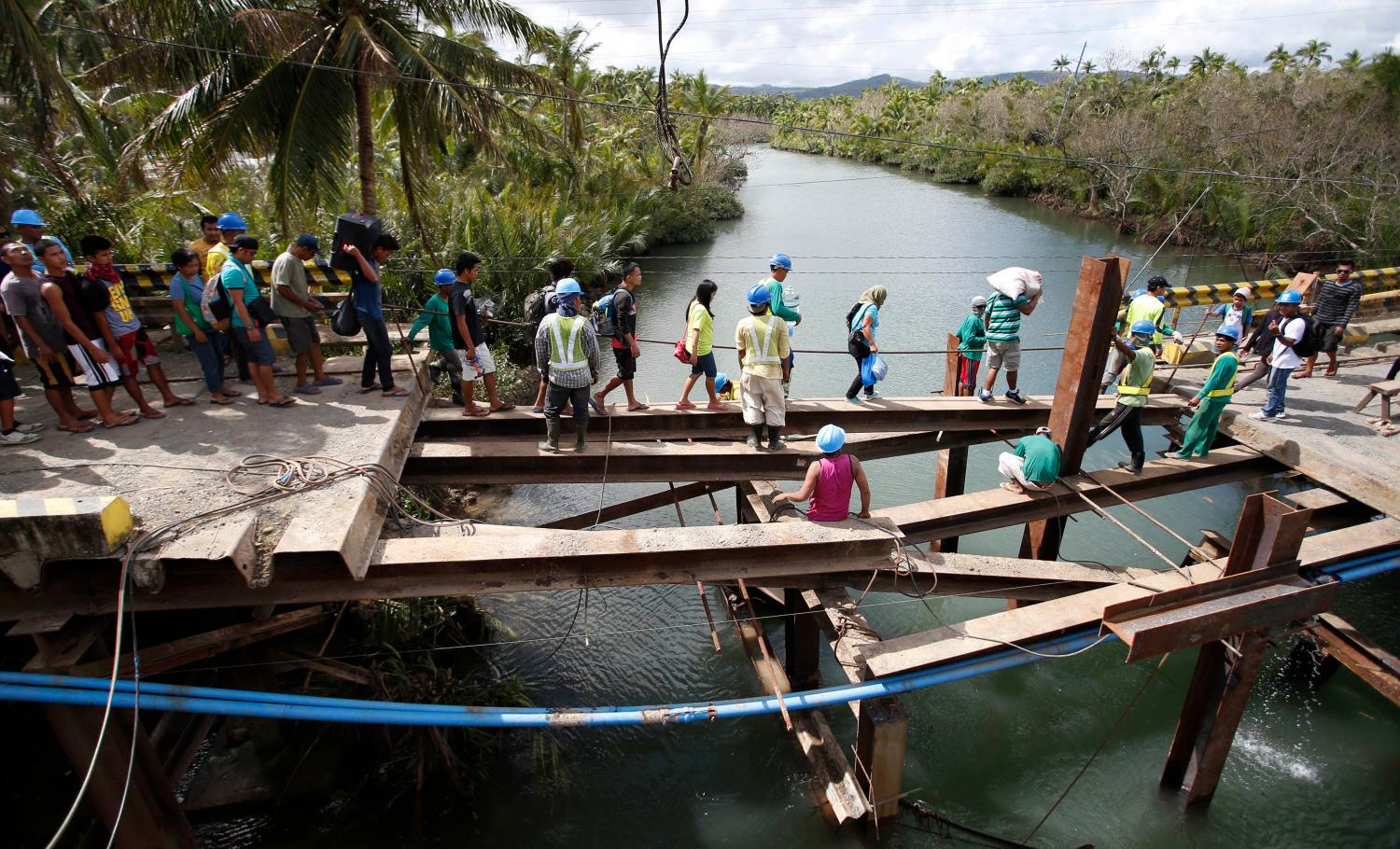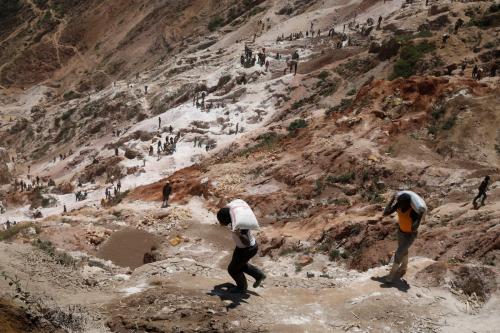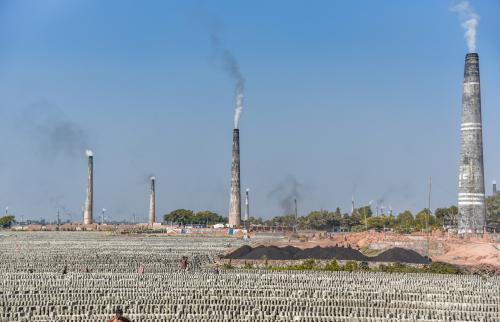 In November 2013, the strongest storm ever recorded at landfall devastated the central Philippines. Super Typhoon Haiyan – known in the Philippines as Yolanda – killed 7,000 people and forced more than four million from their homes. One and a half years later, the reconstruction process is well underway. This report examines progress towards the resolution of the displacement crisis caused by Typhoon Haiyan. It also draws out insights from experiences in the Philippines that may help inform the resolution of other post-disaster displacement crises – a challenge that is expected to grow in future owing to the effects of climate change.
In November 2013, the strongest storm ever recorded at landfall devastated the central Philippines. Super Typhoon Haiyan – known in the Philippines as Yolanda – killed 7,000 people and forced more than four million from their homes. One and a half years later, the reconstruction process is well underway. This report examines progress towards the resolution of the displacement crisis caused by Typhoon Haiyan. It also draws out insights from experiences in the Philippines that may help inform the resolution of other post-disaster displacement crises – a challenge that is expected to grow in future owing to the effects of climate change.
The study’s main point of reference is the 2010 IASC Framework on Durable Solutions for Internally Displaced Persons. The findings are based on a survey of over 4,500 Haiyan-affected households, as well as in-depth interviews with policymakers and practitioners, and focus groups in communities struggling to recover from the disaster.
One and a half years after the disaster, only 17.6 percent of the population feels that life has returned to “normal,” with only 32 percent of households able to cover their basic needs, compared to 83 percent before the typhoon. More than 60 percent of families face difficulties accessing services, with displaced households facing particularly pronounced challenges in some areas. This infographic highlights some of the key findings from the study.
Recommendations
The report backstops calls advanced in related research to improve institutional coordination, strengthen local-level capacity building, and increase the engagement of affected communities in relocation processes intended to ensure the safety of families living in areas highly prone to future disasters. It also makes several additional recommendations to the government of the Philippines, and its international supporters:
- Recognize durable solutions to displacement as a multi-sectoral concern, including both humanitarian and development inputs, and extending beyond the housing sector.
- Redouble investment in the strengthening of evacuation centers, safer construction techniques and other disaster risk reduction programs.
- Establish an interactive, rights-based monitoring system for relocation plans, policies and projects, linking local and national levels.
- Develop and implement enhanced, culturally sensitive livelihood strategies for the affected areas, based on internally displaced persons’ active participation.
- Address fairness concerns in the implementation of aid, and strengthen community-based approaches to humanitarian assistance and recovery.
- Ensure that support for durable solutions and disaster risk reduction and management efforts at all levels integrate gender analyses and response to the different needs and capacities of women and men, girls and boys.




